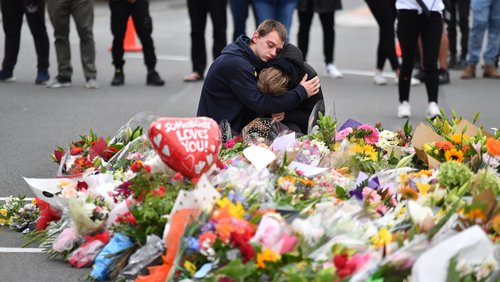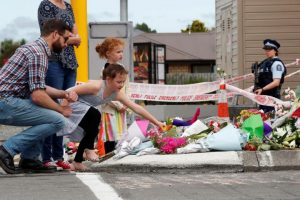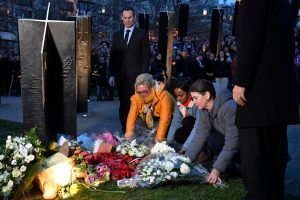
Casey McShea, Staff Writer |
Fifty people were killed on March 15 in a New Zealand terrorist attack after a shooter opened fire inside two mosques. The shooter was a white nationalist extremist who had posted a racist manifesto online and live-streamed a video of the attacks on Facebook. The attacker, who has been identified as 28-year-old Australian Brenton Tarrant, was charged with murder. More charges are expected.
The attacker targeted two mosques: Al Noor Mosque, which is in the center of the city, and Linwood Mosque, which is about three miles away. All the victims have been identified, those among them 14-year-old Sayyad Ahmad Milne, 24-year-old Tariq Rashid Omar, 64-year-old Linda Armstrong, 70-year-old Hussein Mohamed Khalil Moustafa, and 55-year-old Matiullah Safi Ambreen Rashid. One member of Christchurch’s Muslim community said she still has faith but lost her husband and son in the terrorist attack; her 21-year-old son, Talha, was praying inside the Al Noor mosque when the shooting began. Her husband, Naeem, reportedly tried to stop the gunman.
A 17-minute video posted on Facebook showed part of the attack. The clip appeared to have been taken from a helmet camera worn by the gunman and shows a man driving through the streets of Christchurch before pulling up in front of Al Noor Mosque. People have been urged not to spread and watch the video, as it is not only horrifying but could also empower others to spread the killer’s message and inspire attacks similar to his. New Zealand has even made it illegal to spread or possess all or part of the video, under a law that forbids dissemination or possession of material depicting extreme violence and terrorism, according to The New York Times. Two people have already been charged with sharing the video on social media, and others could face charges in connection with publicizing the terrorist attack.
Before the shooting, the gunman had posted links to a white nationalist manifesto on Twitter and 8chan, an online forum known for extremist, right-wing discussions. The Twitter posts showed weapons covered in the names of past military generals and men who had recently carried out mass shootings. The manifesto also included writings where he declared himself a facist and listed the man’s white nationalist heroes, one of whom was President Donald Trump. The 8chan post included a link to the gunman’s Facebook page, where he broadcasted the video of the attack.
New Zealand Prime Minster, Jacinda Arden appeared in Parliament four days after the attack to praise the “extraordinary courage” demonstrated by mosque worshipers and police during “one of the country’s darkest days.” She also vowed to never use the shooter’s name.

“You will never hear me mention his name,” Arden told the New Zealand Parliament. “He is a terrorist, he is a criminal, he is an extremist, but he will, when I speak, be nameless, and to others I implore you: speak the names of those who were lost rather than the name of the man who took them. He may have sought notoriety but we in New Zealand will give him nothing—not even his name.”
Arden, the world’s youngest female head of government at age 37, has become the face of the massacre’s media coverage as opposed to that of the shooter. She has spoken with deep emotion and empathy for the families of the victims, reassuring and updating them and the rest of the public with the latest on the investigation.

The Thursday following the attack, Arden announced an immediate ban on sales of “military-style” semi-automatic firearms and high-capacity magazines. She said the sale was effective immediately to prevent stockpiling and would be followed by a complete ban on the weapons after new laws were rushed to be passed. Until then, people are able to hand over their guns under an amnesty while officials developed a formal buyback scheme, which could cost up to 200 million New Zealand dollars (140 million American dollars).
“On 15 March our history changed forever,” Arden said. “Now our laws will too.”
Leave a Reply